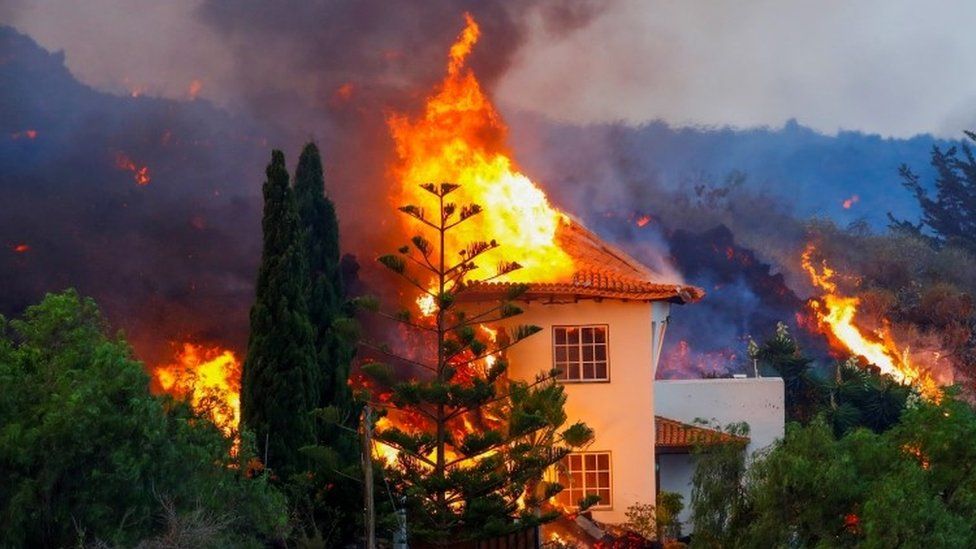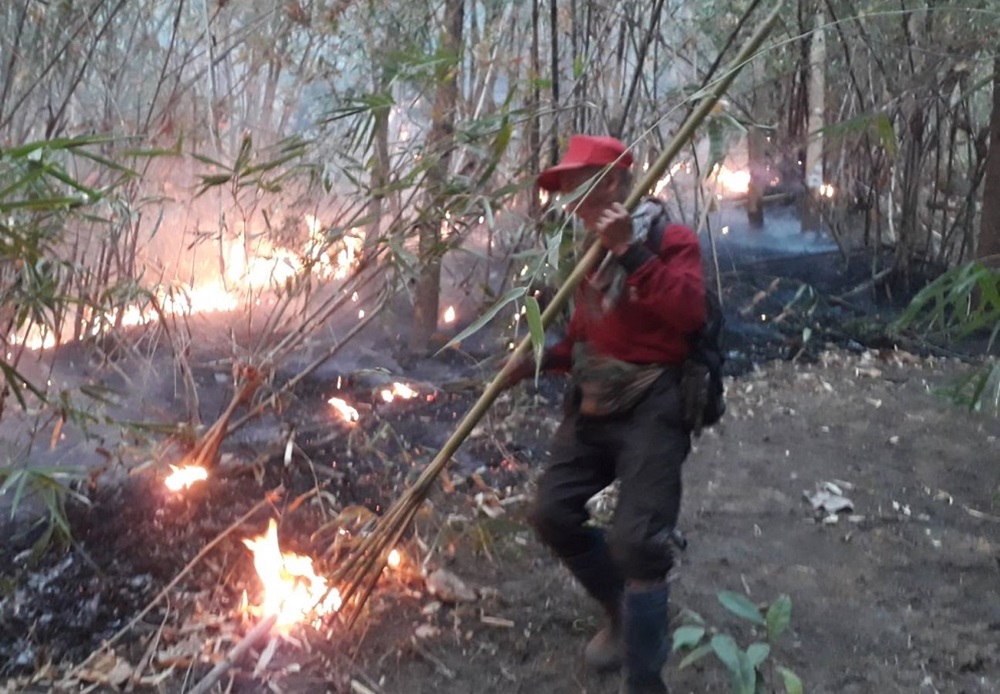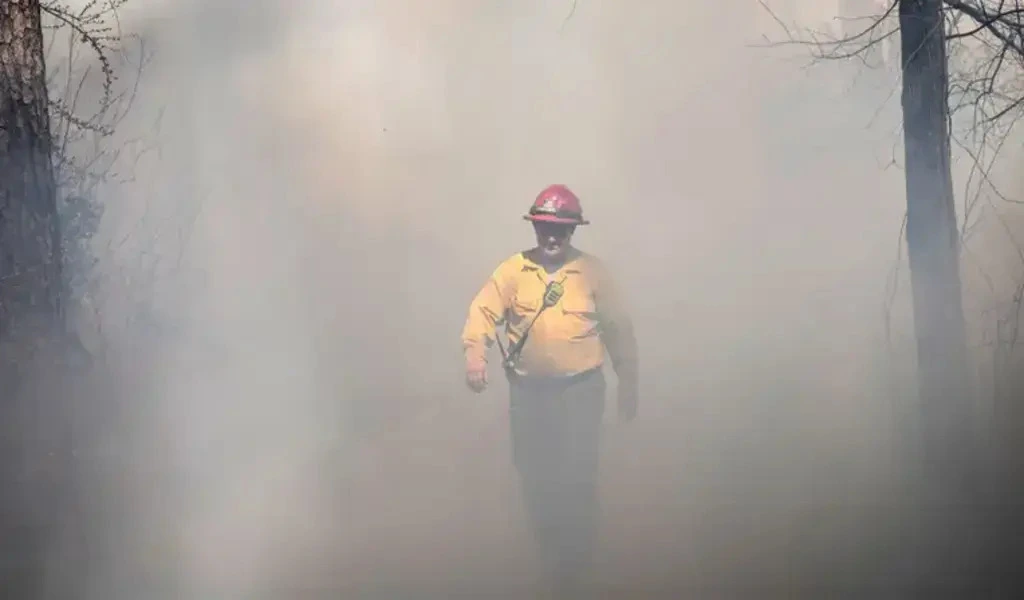(CTN News) – A common, resilient, and seemingly harmless plant is causing an increase in big, fast-moving, and devastating wildfires across the United States.
Grass, like sunshine, can fuel flames with just a spark.
Climate change emissions disrupt temperature and precipitation patterns, resulting in more frequent fires. These flames contribute to a vicious circle of ecological degradation that allows grass to reign supreme.
“Name an environment, and there’s a grass that can survive there,” said Adam Mahood, a research ecologist at the US Department of Agriculture’s research service. “Any 10-foot area that’s not paved is going to have some kind of grass on it.”
According to fire experts, grass fires are normally less violent and shorter-lived than forest fires, but they can spread exponentially quicker, escape firefighting resources, and burn into the expanding number of residences being built near wildfire-prone areas.
Rising Wildfires Incidents Linked to Grass Fuel
According to a new study, the number of homes burned by wildfires in the US has more than doubled in the past 30 years as fires have grown in size and severity. Most residences were destroyed by fires that spread through grass and shrubs rather than forest fires.
According to the survey, the West is the most at-risk region, with more than two-thirds of dwellings burnt in the last 30 years. Almost 80% were destroyed in grass and brush fires.
People are building closer to fire-prone wildlands in an area known as the wildland-urban interface. The amount of land burned in this vulnerable area has increased dramatically during the 1990s.
The number of homes has also increased. According to the same estimate, over 44 million dwellings were in the interface in 2020, representing a 46% growth over the previous 30 years.
Building in fire-prone locations not only poses risks but also enhances the likelihood of fires beginning in the first place due to human activity.
Over 80,000 dwellings are located at the wildland-urban interface in the sparsely inhabited Kansas and Colorado Bill King oversees. According to the US Forest Service officer, living on the edge of nature necessitates actively preventing devastation.
Residents “need to do their part too, because these fires – they get so big and intense and sometimes wind-driven that they could spot miles ahead even if we have a huge fuel break,” he warned.
Climate change-fueled fire is ravaging the western part of the United States on all fronts.
“Globally, the places that burn the most are those that have intermediate precipitation,” said John Abatzoglou, a climate professor at the University of California, Merced. “It’s a little like Goldilocks.” “Not too wet, not too dry, just right, with lots of ignition.”
In America’s grassy heartland, the generally dry and windy Plains, a series of compounding seasonal extremes creates excellent fire fuel conditions in perennial grasses. Grass is more abundant here than in other parts of the United States, providing more continual fuel for flames.
The region is experiencing more megafirms, including Texas’s Smokehouse Creek Fire and Colorado’s Marshall Fire, which destroyed over 1,000 homes in 2021.
Rainy springs promote increased grass growth. During the winter, it goes dormant or plays dead. Warmer winters with less snow cover, particularly in the Northern Plains, expose grass to drier spells in late winter and early spring, according to King and Todd Lindley, a fire weather expert for the National Weather Service in Norman, Oklahoma.
Lindley explained that grass is inherently explosive due to its weather sensitivity. Unlike in woods, grass does not require long periods of warm, dry weather to become fuel.
Moisture can be extracted from the plant for at least an hour or even a day after rain. A spark, strong winds, and invasive plants that burn hotter and longer all contribute to a grass fire calamity.
“These compound extremes, these sequences of extremes that follow one another, if you get the right sequence, it can be game on for this sort of wildfires,” Abatzoglou said. “You’re creating a perfect storm for spreading the fire there.”
King claims that excessive drought and years of forest degradation are causing larger and more intense fires in western woods.
“When I started 30 years ago, a big fire was 30,000 acres, and now that’s normal, that’s typical,” he remarked. “I’d have maybe one a year, one every couple of years of that size, and now we hear of 1-million-acre forest fires.”
Grass can also be found in forest systems, where it functions as a fuse, connecting easier-to-ignite finer fuels to bigger, drought-impacted tree systems, causing and spreading more intense wildfires.
Grass grows where trees die. It recovers from fire considerably faster than other plants and can burn again in a matter of months. King has witnessed this firsthand.
“You could have green grasses coming up in a burned-grass landscape within a day or two, that’s how fast it rejuvenates,” he said.”Forest recovery could take years or generations, or never recover in our lifetime, or our generation’s.”
As more vegetation in the West burns, it is replaced by native and nonnative grasses.
According to Mahood of the USDA, it is causing fires in the desert where they did not previously occur. The same drought-fueled fires are becoming more widespread in deserts due to annual grasses, which do not grow all year, unlike perennial grasses in the Plains.
These grasses use rare bursts of moisture to spread before dying, leaving a carpet of fire fuel on the desert floor.
Mahood cited two recent fires in California’s Mojave National Preserve as prime instances. Invasive redbrome grass fueled the fires, which destroyed hundreds of thousands of acres of the Mojave Desert, including over a million Joshua Trees.
The growing heat and dry conditions then prevent native plant recovery. The effect is more grass.
Despite being the largest ecosystem in the Lower 48, half of the West’s famous sagebrush has been destroyed or damaged in the past 20 years. USGS research indicates that grass, fire, and other pressures destroy an area roughly the size of Delaware yearly.
More grass and a complex web of climate stressors lead to increased fire risk today and in the future.
“It may seem bad now, but this will probably not seem nearly as bad in the next decade,” said Mahood. “Think about how bad the fire season was two decades ago – now, that seems like nothing.”









